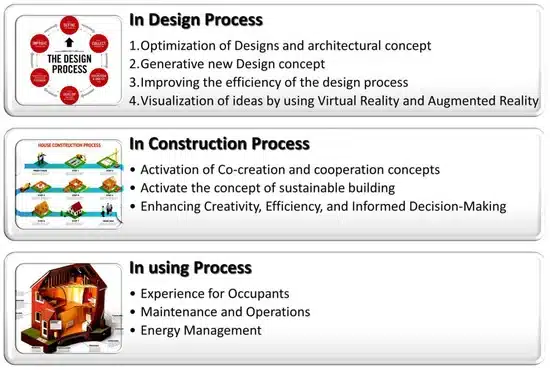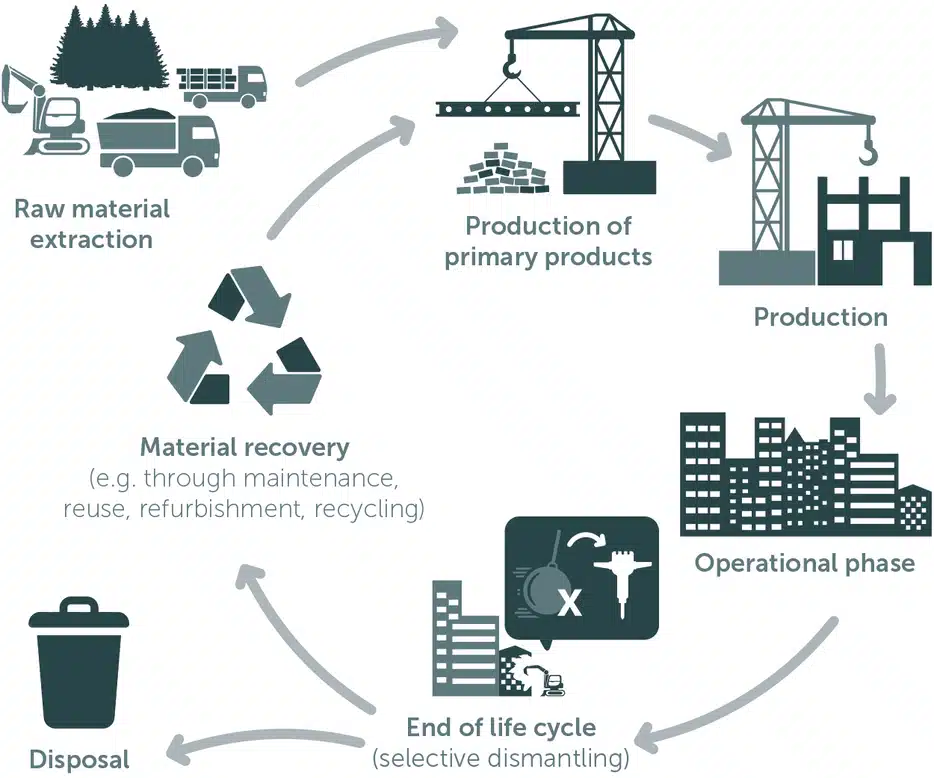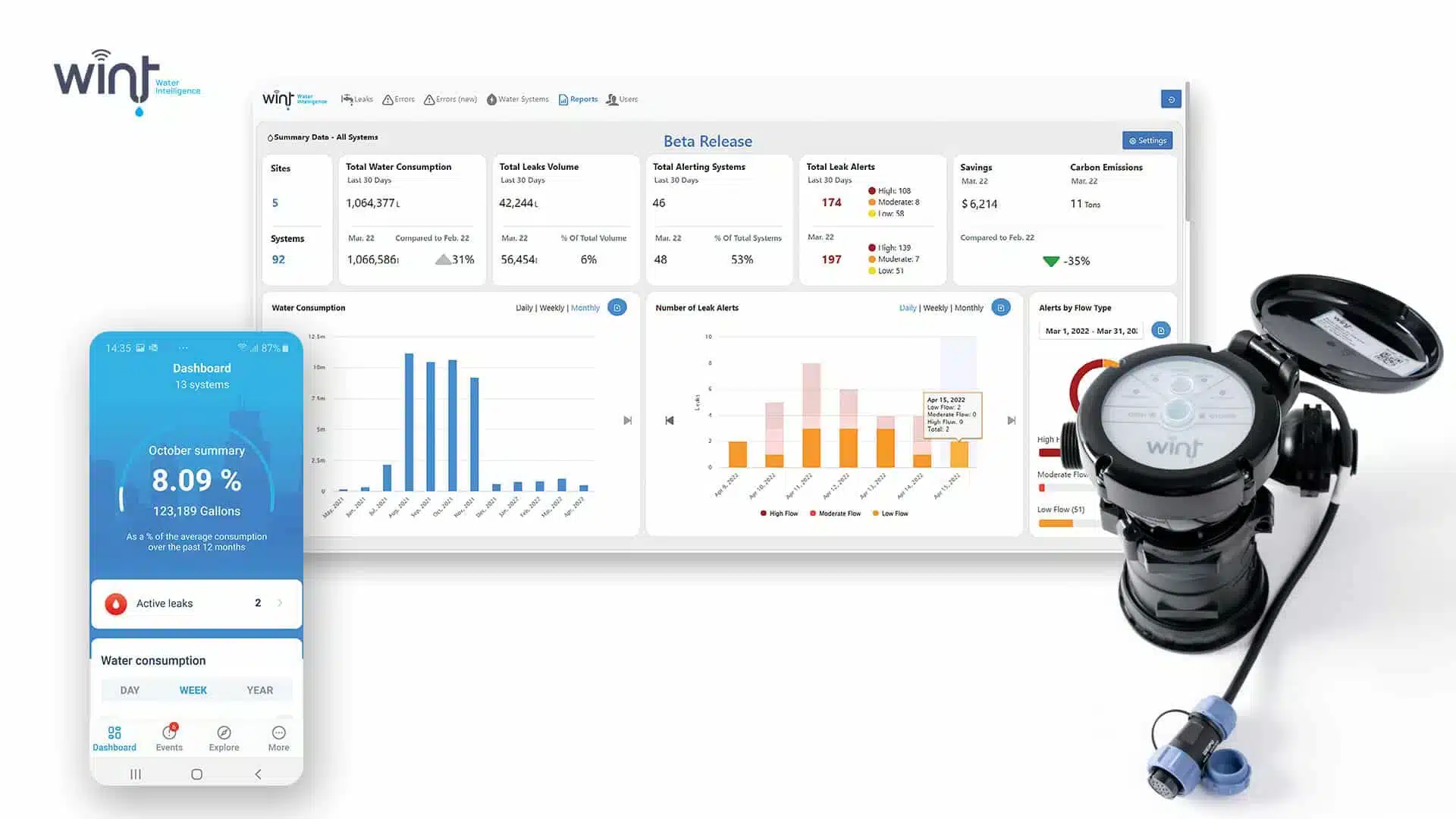As one famous frog once sang, It’s not easy being green. But in 2024, it’s not really a choice when it comes to commercial and multi-family residential buildings.
The construction industry represents nearly 40% of global energy consumption nowadays. It also uses between 40% and 50% of the world’s raw materials and resources and is responsible for around a third of global waste.
Considering that most buildings built today will still be in use around 2070, it’s vitally important that we evaluate their impact on sustainability as well as our bottom-line environmental footprint.
What is Sustainability Engineering?
Sustainability engineering is a practice that entails the design, development, and construction of buildings, structures, and infrastructure that adhere to ecological regulatory requirements and aim to reduce the impact of the project on our planet in the long and short term.
Considered by many the drivers of sustainability in the construction industry, sustainability engineers are responsible for choosing sustainable materials, as well as implementing energy efficiency, waste reduction, and water conservation plans and solutions.
The role of MEP (Mechanical, Electrical, and Plumbing) engineers is essential for sustainability engineering, as they are responsible for designing sustainable systems that follow ESG policies for a reduced environmental footprint. They should also have a holistic understanding of processes throughout the building lifecycle – from design through construction and operation of the structure over time.
Sustainability Engineering: Why Green Matters?
In the United States, the construction industry consumes around 15% of the public water supply while responsible for 40% of drinking water pollution events. Moreover, 50% of the environmental pollution from landfills and 23% of air pollution were also attributed to this sector.
New trends like timber wood frame construction, which uses wood as the primary material for building structures, also come with various water-related risks. Due to wood's vulnerability to moisture, timber construction can lead to water damage from excessive moisture, fire susceptibility, decreased durability, and foundation instability.
It’s up to the construction industry to reduce its impact on the environment, not only for the sake of the Earth but also for financial reasons. Sustainable construction and buildings incur lower power and water consumption expenses and reduced waste removal costs, among other advantages.
One of the advantages worth mentioning is compliance with “Green Building” standards and local environmental regulations. LEED, LBC, Green Globes, BREEAM, ASHRAE, Nabers, and IWBI are the best-known standards.
The guide: Implementing sustainability engineering in buildings
Numerous frameworks and certifications can guide the implementation of sustainability engineering in construction projects, retrofits of existing buildings, as well as operational building management. Regardless of the framework you choose to follow, there are a few basic steps you must consider.
1. Conduct a lifecycle assessment & prioritize source sustainably
Lifecycle Assessments (LCAs) are a tool employed by sustainability engineers to estimate the environmental impacts of a structure from design to end of life. The assessment process requires a holistic analysis that starts with evaluating the materials and resources used in construction.
The selection of sustainable materials and practices is a central aspect of sustainable design and requires a data-driven approach.
- Measure the carbon footprint of the various building materials from production to disposal to assess their environmental “cost.”
- Analyze emissions, water, and energy consumption throughout the construction and operational phases, seeking out opportunities for optimization.
- Where possible, utilize recycled and locally sourced materials to lower your carbon emissions footprint and offset your contribution to the demand for new resources.
- When possible, choose “green” building materials that have proven energy efficient while providing occupants with a better and healthier product.
2. Aim for energy-efficiency
Commercial and multi-family residential buildings have significant energy demands that stem from HVAC (Heating, Ventilation, and Air Conditioning) systems, lighting, and other electrical systems (like elevators and EV car charging stations). Sustainability engineers are responsible for optimizing existing systems and integrating new technologies to minimize energy consumption without compromising occupant comfort or safety.
Modern HVAC and energy-efficient lighting systems can dramatically reduce energy consumption, especially with “smart building” technologies like variable refrigerant flow (VRF) systems, energy recovery ventilation, and AI-enhanced temperature control systems.
Energy efficiency also means adopting and utilizing (when relevant) innovative renewable energy sources like solar panels and wind turbines. By generating clean energy, you can reduce the carbon footprint of the building’s energy consumption and dependence on electricity from traditional power grids. This reduced energy consumption method also comes from water-related processes such as site preparation or water-intensive construction materials. Optimizing construction processes, leveraging energy-efficient technologies, and minimizing water use can help reduce the overall footprint of water in your buildings.
3. Manage water consumption to prevent wastage
According to the ASPE Plumbing Engineering Design Handbook, water waste reduction is vital to sustainability engineering, especially when designing and implementing efficient plumbing systems that minimize waste and alleviate the pressure on the local water supply.
- Install low-flow fixtures (faucets, showers, and toilets) to minimize water wastage without impacting user experience.
- Harvest rainwater wherever possible to supplement non-drinking water supplies. You can store the water in tanks and reduce dependence on primary water sources and your buildings’ water footprint.
- Implement greywater systems to recycle non-drinkable wastewater for irrigation, toilet flushing, and other water-dependent applications. Using greywater can reduce your demand for freshwater supply and water wastage.
- Utilize Enterprise-Grade water management solutions for leak mitigation. Platforms like WINT Water Intelligence monitor and optimize water usage in real-time by employing AI-powered systems that gain insights into consumption patterns, detect and stop leaks, prevent water damage within the structure, and enable a data-driven approach to commercial water conservation and sustainability.

4. Support recycling through engineering
The construction industry contributes a tremendous amount of waste to landfills, making waste reduction a critical issue. A waste reduction plan entails designing buildings that separate waste streams, reuse water, and employ other methods of efficiently enabling recycling and reducing landfill waste.
At the construction stage, sustainable engineering entails selecting and using materials and methods that minimize environmental impact. These include using recycled and recyclable materials and prefabricated components that can be reused, thus encouraging a circular economy in construction.
Last but not least, sustainability engineering addresses the issue of waste reduction and disposal at construction sites. This has been such a concern that water utilities and municipalities like the City of Toronto are enacting regulations to record water waste from disposal at construction sites in real-time. Water metering through solutions like WINT gives these organizations detailed insights into gaps in water management and helps inform essential planning decisions.
5. Leverage technology to automate and optimize
One of the core principles of sustainability engineering is researching and utilizing innovation to promote eco-friendly building construction and operation practices. The link between the physical and digital is not only allowing us to create more smart buildings that better serve their occupants but also reduce the significant environmental impact of construction and building operations.
There are plenty of technologies available today that support green building and sustainability engineering for large-scale and commercial buildings:
- Active and connected sensors can monitor, adjust, or shut off functionalities within the building, such as water or power flows, automatically according to preset templates and by detecting irregularities in consumption or emissions.
- Data-driven decision-making and AI/ML technologies using specialized software systems and platforms can enable preventative maintenance to mitigate the risk of wear and tear, as well as ongoing operational optimization of sustainability metrics.
- Building automation reduces your dependence on staff while making your building more sustainable and outcomes more predictable.
[ Source: WINT Water Intelligence ]
Building a sustainable future through engineering innovation
The adoption of sustainability engineering in the construction industry is no longer optional. With increasing material and labor costs on the one hand and stringent environmental regulations on the other, sustainability engineering is vital to positive ROI on construction projects and the development of long-term building operations.
Understanding your environmental impact, aiming for energy efficiency, prioritizing water conservation, and enabling effective waste management reduction are all essential steps in your journey to building a sustainable future – For that, technology is here to help!
With AI-based technologies like WINT Water Intelligence leading the charge, MEP engineers can implement smart IoT edge devices that can significantly reduce water consumption by up to 25% and cut the carbon emissions associated with water.




